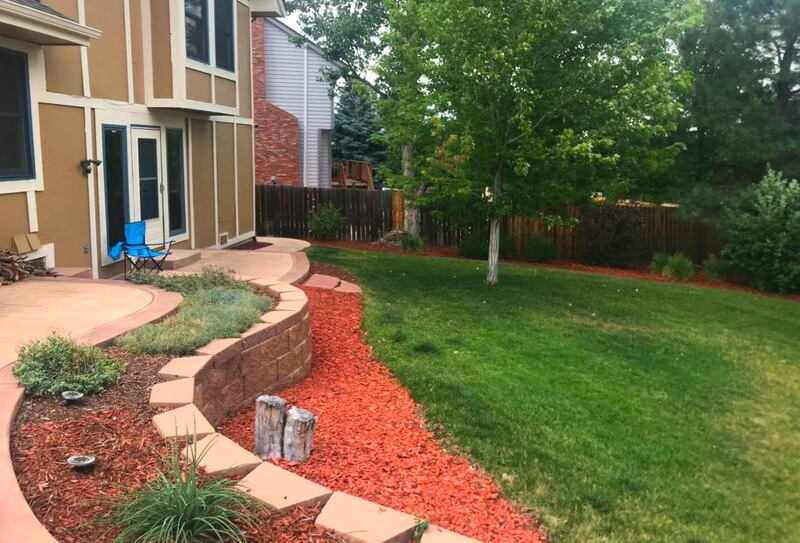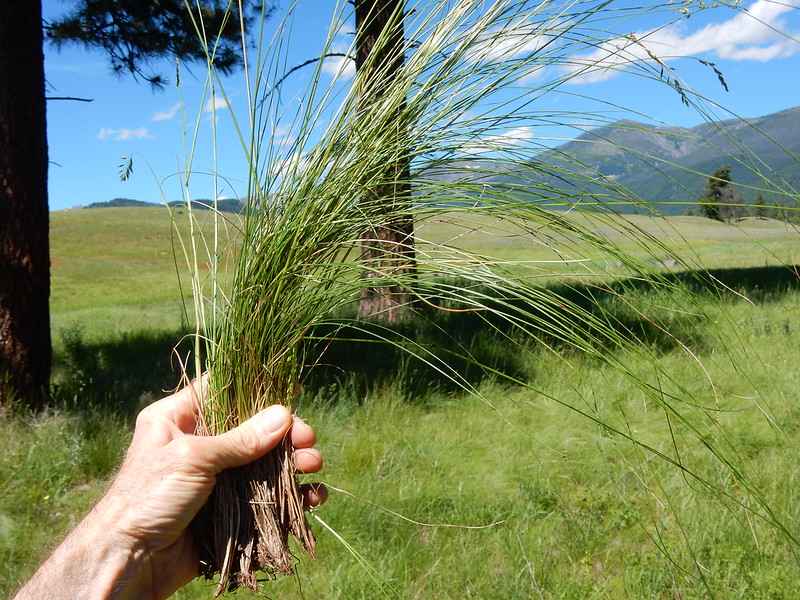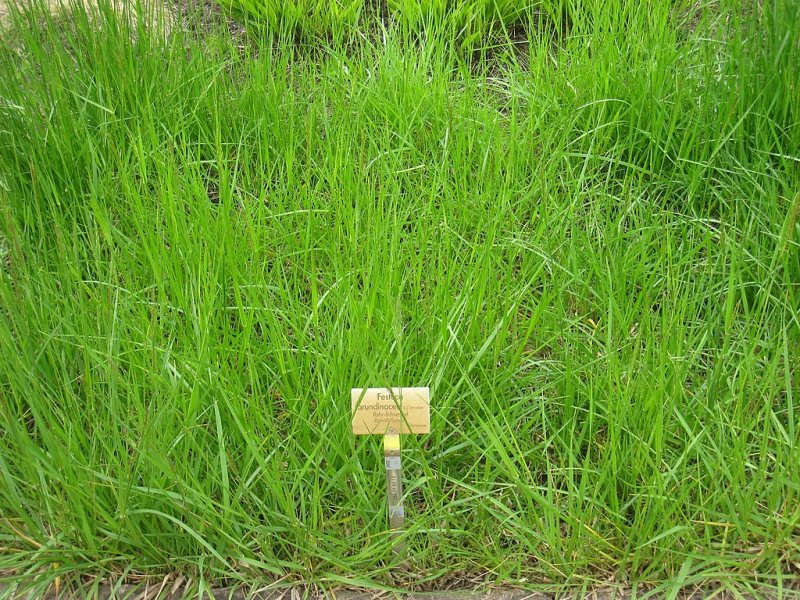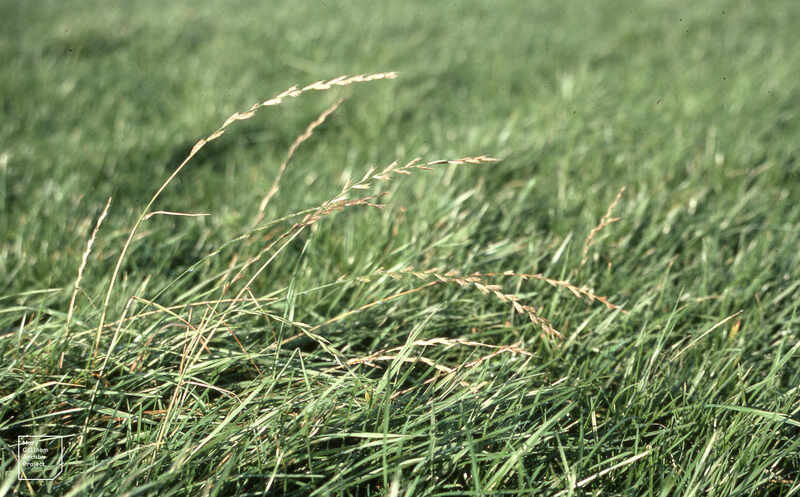4 Best Grass Types for Grand Rapids, MI
BY LASHONDA TUCKER | APRIL 17TH, 2023 | GRAND RAPIDS, LAWN CARE, MICHIGANFrom the beautiful array of greenery at the Frederik Meijer Gardens to the many parks and festivals in Grand Rapids, there’s no shortage of reasons why you wouldn’t want to be out enjoying the city’s sites. When you come home, you want to return to a landscape as well-kept and inviting. That’s why we’ve compiled a list of the best grass-types for the cool Grand Rapids fall and spring weather, warm summers, and freezing and snowy winters.
In this article, we’ll cover:
- Warm-Season vs. Cool-Season Grasses
- 4 Best Grass Types for Grand Rapids
- FAQ About Grand Rapids Grass Types
- Choose Plant and Grass Varieties for Your Grand Rapids Landscape
Warm-Season vs. Cool-Season Grasses
There are two types of grasses to choose for your lawn: warm-season grasses and cool-season grasses. Cool-season grasses thrive best in Grand Rapids.
Warm-season grasses thrive in hot, humid climates and go dormant during the cold winter months. When the temperatures drop below freezing, the grass turns brown. Because warm-season grass thrives best in areas with hot summers and short, mild winters, they are found in the southern regions of the United States.
Cool-season grasses also go dormant in freezing temperatures, but cool-season grasses go dormant later in the season than warm-season grasses. Cool-season grass also goes dormant in hot summer temperatures. Since cool-season grass grows best in cool to mild weather, when air temperatures are between 60 and 75 degrees Fahrenheit, they are usually found in the northern regions of the United States.
4 Cool-Season Grasses for Grand Rapids
Cool-season grasses are ideal for Grand Rapids. The grass is equipped for the cool spring and fall Grand Rapids weather, humid summers, and freezing winters.
1. Kentucky Bluegrass

Kentucky bluegrass is a popular choice for Grand Rapids homeowners. It has a dark green color and is a lush, dense grass. It expands and germinates new grass, so homeowners with dead spots or bald patches gravitate towards Kentucky bluegrass. There is a tradeoff, however. It needs regular mowing and watering to keep it healthy, and it has high fertilization needs.
Kentucky bluegrass has low shade tolerance and grows best on properties that get a lot of sun. If your property has many trees or buildings blocking the sunlight, you may want to go with fine fescue or tall fescue, as they are more shade tolerant.
Kentucky bluegrass has a soft texture, moderate foot traffic tolerance, and the ability to recover quickly from damage. This grass is right at home for those who love to host outdoor events or who have children engaged in kickball games a few times a month.
Classification: Cool-season grass
Spreads by: Rhizomes
Shade tolerance: Low
Drought tolerance: Moderate; Requires proper irrigation during hot months or it will go brown.
Foot traffic tolerance: Moderate; It quickly recovers from damage.
Maintenance needs: Moderate mowing frequency and high fertilization needs.
Mowing height: 2.5 – 3.5 inches
Potential for disease: Moderate to high; prone to several diseases, such as dollar spot, leaf spot, necrotic ring spot, summer patch, and stripe smut.
Soil pH: 6 – 7.5
Soil type: Performs best in well-drained, heavy soils with high fertility.
Other notes: Blending two to four cultivars will give the best performance. Keep in mind that seeding in late spring or early summer may cause a weed problem. But you can sod or seed Kentucky bluegrass.
2. Fine Fescue

Photo Credit: Matt Lavin / Flickr / CC BY-SA 2.0
Fine fescue has a striking blue-green look. It grows early and is a viable option if you’re looking to blend grasses. You may have a yard that is more colorful than some, as fine fescue sometimes has a green color lighter than other grasses.
If Kentucky bluegrass doesn’t work for you because your property doesn’t get a lot of sun, fine fescue may be calling your name. It’s the most shade-tolerant cool-season grass. For the best results, plant the chewings variety. It is the most shade-tolerant fine fescue variety.
Fine fescue’s fine texture welcomes bare feet, but tread lightly. It has low to moderate traffic tolerance. A few trips across the grass to the mailbox are okay, but this is not the grass for children having regular jump rope challenges.
Fine fescue has low watering, mowing, and fertilization requirements. Sheep and hard fescue are most revered in the Grand Rapids area for how easy they are to maintain.
Classification: Cool-season grass
Spreads by: Creeping red Fescue spreads by rhizomes, while other fine fescues are bunch-type grasses, such as chewing, hard, and sheep fescues.
Shade tolerance: Moderate to High, depending on species
Drought tolerance: Moderate to High, depending on species
Foot traffic tolerance: Low to Moderate, depending on species
Maintenance needs: Low fertilizer and mowing needs.
Mowing height: Set mowing height between 2.5 and 4.0 inches, depending on species.
Potential for disease: Moderate. Common diseases include red thread, leaf spot, dollar spot, summer patch, and powdery mildew.
Soil pH: 6-6.5
Soil type: Will not perform well in wet soil conditions. It prefers drier soils and tolerates a wide range of soil types and fertility.
Other notes: Hard fescue, chewings, and creeping red are frequently mixed with perennial ryegrass and Kentucky bluegrass for shady, dry areas.
3. Tall Fescue

Photo Credit: Daderot / Wikimedia Commons / Public domain
If you’re not really into all of the work of Kentucky bluegrass, tall fescue requires less maintenance. Like Kentucky bluegrass, it requires frequent mowing, but it does not produce significant thatch and it has lower fertilization needs. If you prefer to have more time enjoying the Grand Rapids Art Museum than maintaining a lawn, you may gravitate towards tall fescue.
Tall fescue will also grow better in the shade than Kentucky bluegrass.
Tall fescue stands out with its wide leaves and glossy, dark green color. It thrives in the cooler weather and freezing winters of Grand Rapids because it’s cold-tolerant. It’s also drought-tolerant and retains its green color through most Grand Rapids summers without needing additional watering. But extensively long, dry months will require you to quench tall fescue’s thirst with plenty of water to avoid stress and damage.
The coarsely-textured grass may encourage you to keep your shoes on. It’s also not the best choice if your yard is home to regular block parties and barbeques. It has moderate foot-traffic tolerance.
Classification: Cool-season grass
Spreads by: Produces short rhizomes but has a bunch-type growth habit
Shade tolerance: Moderate
Drought tolerance: Moderate to High
Foot traffic tolerance: Moderate
Maintenance needs: Frequent mowing. Does not produce significant thatch.
Mowing height: Set mowing height to 2 inches when the grass reaches 3 inches tall.
Potential for disease: Tolerant of most diseases when properly maintained.
Soil pH: 5.5-6.5
Soil type: Adapted to a wide range of soil conditions but prefers fertile clay soils with good drainage.
Other notes: Retains its green color during the winter, depending on the variety. The Juvenile variety is not cold-tolerant.
4. Perennial Ryegrass

Photo Credit: Dr Mary Gillham Archive Project / Flickr / CC BY 2.0
Grand Rapids homeowners take to perennial ryegrass when they need a quick cover. It germinates and develops faster than some other gasses, like Kentucky bluegrass. So ryegrass may be a better choice if you have bare spots, need to overseed, or are establishing a lawn.
Ryegrass is recommended if you are seeding in the summer, but with the caveat of never using more than 50 percent of it in a mixture. Perennial ryegrass has poor resistance to extreme conditions like heat, cold, and drought. While the freezing Grand Rapids winter temperatures may be a challenge for ryegrass, the typical cooler non-summer months provide the right conditions for better performance.
Speaking of performance, if you have children that like to show off their athletic abilities by regularly running, playing, and tumbling across the grass, perennial will be well-suited for your home. The fine-textured grass blades offer some cushion and comfort for stumbles and falls, too.
Perennial ryegrass is a rich green color with a glossy look on one side of the leaf. This grass loves to sunbathe. It has low shade-tolerance. It takes less to maintain perennial than tall fescue and Kentucky bluegrass, as perennial only requires moderate mowing and fertilizing. If you’d rather spend time in the yard playing with the children instead of pushing a lawn mower and laying down fertilizer, you’ll appreciate perennial ryegrass.
Classification: Cool-season grass
Spreads by: Bunch-type growth habit
Shade tolerance: Low
Drought tolerance: Low
Foot traffic tolerance: High
Maintenance needs: Moderate mowing and fertilization requirements. Thatch buildup isn’t significant.
Mowing height: 1.5 – 2.5 inches
Potential for disease: High. Common diseases include gray leaf spots, red thread, and leaf spot/melting-out.
Soil pH: Can grow in soils with a pH between 5 and 8 but prefers between 6 and 7.
Soil type: Prefers good drainage and fertility but can tolerate some poor drainage.
Other notes: It mixes well with other grass types like Kentucky bluegrass, bentgrasses, and fine fescues. Mixing it with Kentucky bluegrass creates a lawn more tolerant of disease and high traffic.
FAQ About Grand Rapids Grass Types
Creeping bentgrass takes a lot of time and money to maintain. For example, it’s highly vulnerable to diseases and needs to be treated with fungicides and other chemicals. In Michigan, it’s primarily used on golf courses. If you do see this bentgrass creeping in someone’s lawn, it’s usually not intentional. Creeping bentgrass found in Michigan homes are considered weeds.
Cool-season grasses go dormant in the summer when the air temperature is more than 75 degrees Fahrenheit. Long periods of dryness can also cause the grass to go dormant. To manage summer dormancy from drought, water the grass. Cool-season grasses also go dormant when the soil temperature is consistently below 45 degrees Fahrenheit.
No. It depends on the species. Sheep fescue is bluish-green. Chewings fescue and creeping red fescue have a medium to dark green color. Hard fescue has a gray-green appearance.
Choose Plant and Grass Varieties for Your Grand Rapids Landscape
When choosing the right grass for your property, consider your area’s climate and soil conditions. Make sure you understand which grass types are best for mixing, what grass types they’re best for mixing with, and how combining different types will affect the overall performance of your lawn.
Select a grass type that fits well with your family’s outdoor activity frequency and your availability for maintenance.
Native plants are another way to enhance your yard and give back to the ecosystem. Native plants provide food and habitat for butterflies, birds, and wildlife while adding color and variety to your landscaping design.
We understand that you want to get back to the touring and taste testing of the 40 plus craft breweries that await you. They don’t call Grand Rapids Beer City, USA for nothing. Hire a Grand Rapids lawn care professional so they can mow while you sip.
Main Photo Credit: Meyer May House / WMrapids / Wikimedia Commons / CC0